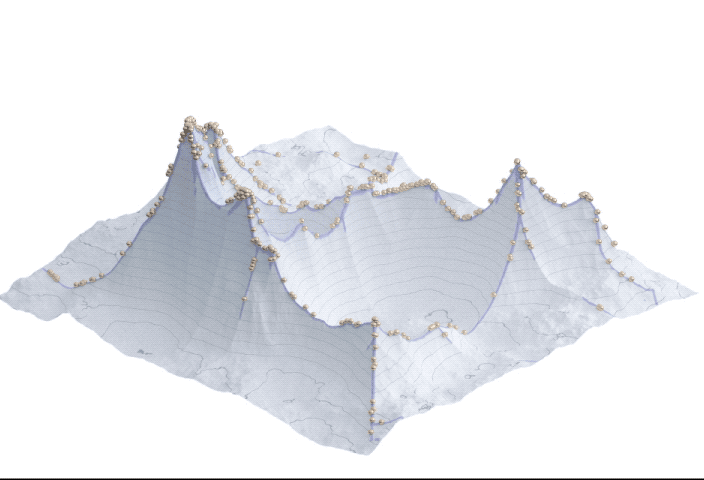Fitness Lanscape
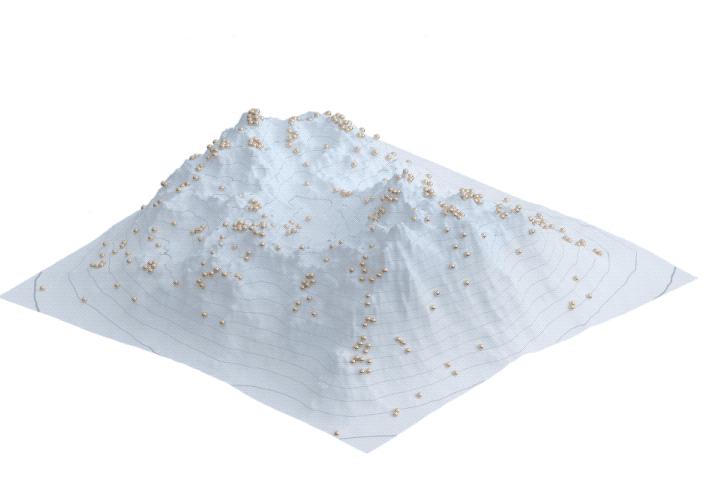
I've often used the notion of fitness landscape as a metaphor when thinking of genes and memes in a complex world. It can be useful to understand natural selection visually, but it'd be also a nice model to abstract how evolution or innovation works in society, design, and even software development as a sort of mountain climbing. Here are some gifs that show how particles behave in various environments. All of the imageries are under CC-0 so please feel free to use them anywhere.
license type='cc0' href='https://www.dropbox.com/sh/08fbro04autjwhw/AADutpnAJYRGnOBGSiz9ZgGIa?dl=0'Fitness landscape assets/license
The “height” of the landscape represents a visual metaphor for fitness. The definition of fitness varies depending on the context -- the degree of adaptation to the environment in biology, the quality for design, or the productivity of society or company. In such cases, each of the particles may represent a life, designer, and person respectively. 3D landscapes like the below can visualize the fitness function that takes only 2 arguments (X and Z axes), but most of the problems on the earth have to handle astronomical number of parameters, thus the terrain would take a form on the higher-dimensional space consists of millions of axes.
The first example shows that particles on the terrain try to climb a slope to increase fitness. However, the "hill-climbing" strategy only works in the case that there's a single peak on the terrain, where each particle can reach to the summit someday as far as it keeps moving along the upward direction of the slope on its vicinity.
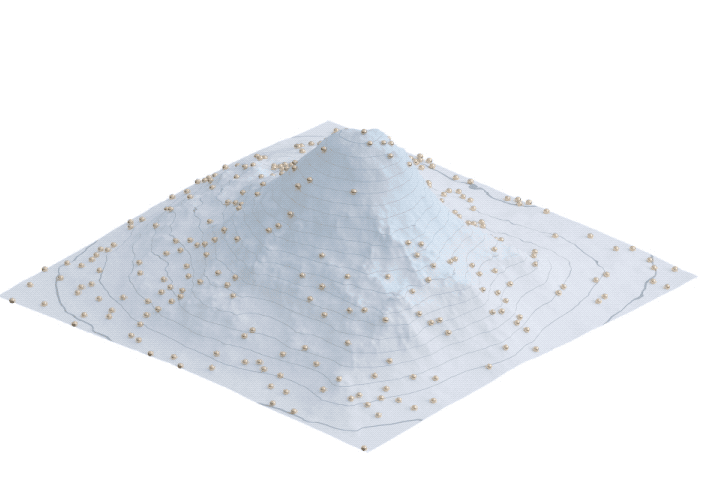
The single peak mountain
But if there are more than a single mountain, this strategy won't work since it brings a possibility for particles to be left behind on a small hill.

Multimodal optimization
Not to do so, particles have to be brave to run down from the known peak and traverse the valley to find out much higher mountains.
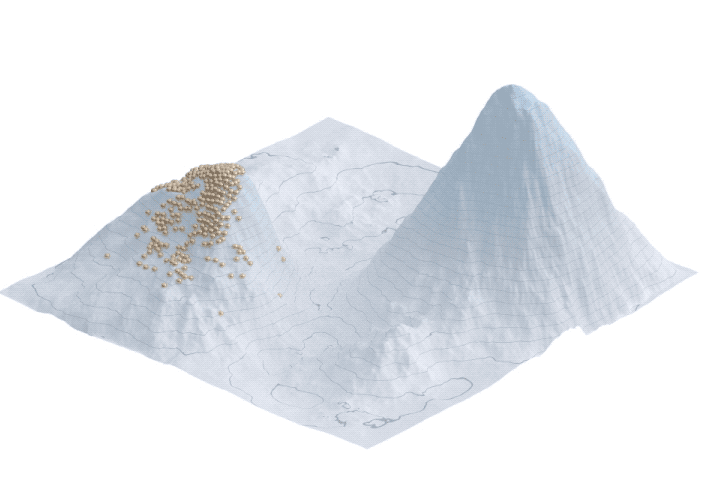
How selendipity works
On the other hand, the breadth of the landscape could be expanded by some external factors (such as the improvement of the technology). There might be much higher peaks outside of the known areas of the landscape.

How the invention of pigments like ultramarine blue and Vantablack expands the color-space that artists can handle with
As you can see, the behavior of each particle has two aspects; rationality and randomness. As particles never know the whole elevation map of the terrain (there's no perfect function to quantify beauty parametrically, you know) and it's too foggy to look out the landscape far away, the only reasonable way for particles to increase the elevation for the time is to sample the height of neighbor positions and carefully step forward in the direction where the slope is steepest. The methods like growth hacking and A/B testing are basically categorized as this strategy but they are always dicey because it might lead the group into the dead-end of evolution. The randomness supplements this vulnerability -- you can see it by how destructive innovation and serendipity break through the status quo in the human history.
Furthermore, the landscape is not necessarily static. It might be eroded or lifted along in time. On such a so-called "dynamic fitness landscape", to keep standing on the known peak brings a danger of annihilation to the group.
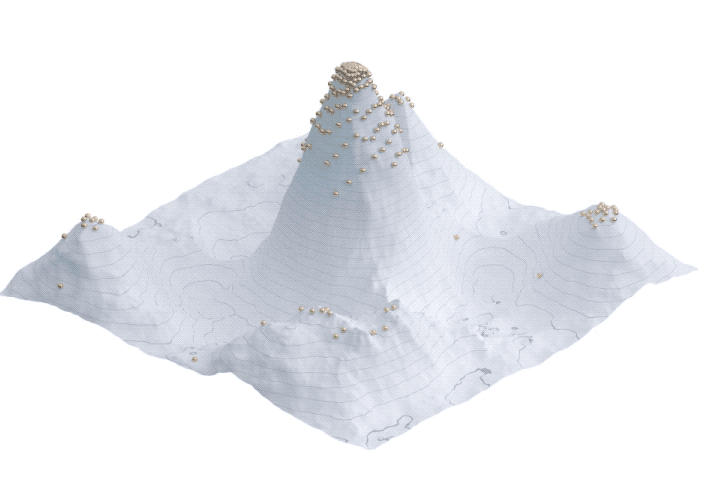
“Overspecialize, and you breed in weakness. It’s slow death.” - Ghost In The Shell
The height of the landscape also can be affected by the particles themselves. For example, the more particles get together, the more the upward force lifts up the landscape on that place. And a mountain created by this action gathers further particles and the mountain grows and its summit gets sharp furthermore.
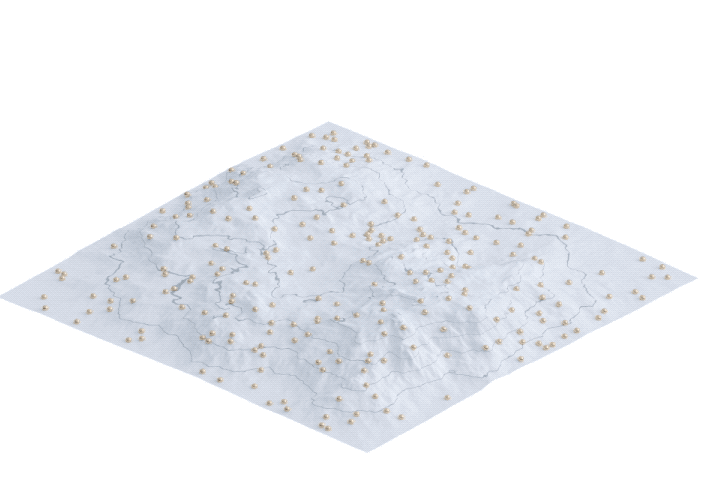
Network Effect
This sort of positive feedback loop can be observed in various situations such as language evolution, how messaging app takes a market share, and how de-facto standards are formed. The above gif visualizes this sort of network effect.
In the complex world, there is not only positive feedback but also a negative one.
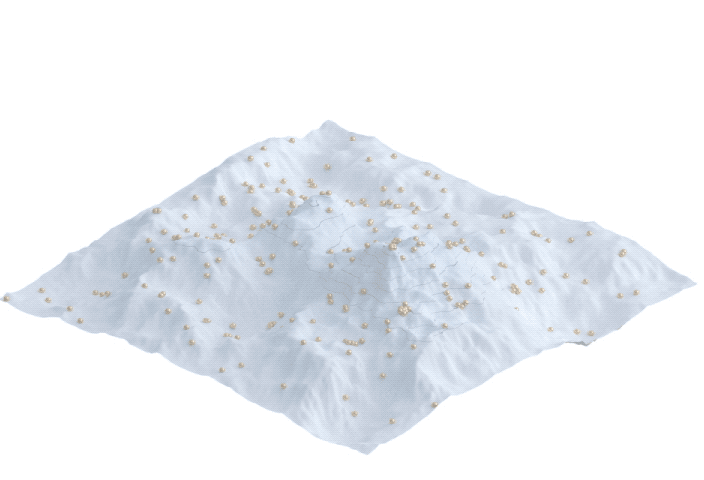
Be unique.
In other words, the place where particles are crowded is pushed down like a waterbed and then particles try to escape from the pit they created. It works like a repulsive force between particles and particles keep moving until they are placed uniformly. The culture that prioritizes originality can be abstracted with this model.
In the real world, these mechanisms are intertwined in an intricate way and it makes the particles-landscape interaction so chaotic. Even when I'm about to fall into a narrow perspective and become a decisive thinker, regarding culture or society as the model of fitness landscape always makes me feel agnostic.
P.S. This simply shows how recent Adobe products confine designers. They don't let us wander around the mountains uniformly but rather is trying to build "shortcut" trails between trendy and known styles (like flat design in UI/UX).
